“Power, deception, speed, coordination, all wrapped in 11 (blue and) white packages from the Border City.”
Such was the observation of a Los Angeles Times reporter who witnessed San Diego High’s 27-0 victory over host Santa Barbara along with 5,000 others at Peabody Stadium in the Southern California playoff semifinals.
“Either Santa Barbara had a bad case of stage fright or the club was astounded by the size of the Coast League champions, who must have averaged nearly 190 pounds per man,” wrote Irving Eckhoff.
The Hilltoppers shocked the Golden Tornado with an opening touchdown drive of five consecutive first downs and 72 yards in 11 plays. They finished with a 298-122 advantage in total yards, rushed for 251, and had 14 first downs to 3. Santa Barbara had made six consecutive appearances in the playoffs.
Coach Hobbs Adams’s Hilltoppers, favored to win their first title since 1916, charged into the championship game against Inglewood, a team Adams purposely scheduled to compare his team against a potential playoff opponent, and defeated, 21-0, in the season opener…
…and lost!
The Sentinels, defending champions, who started the season 0-2-1 and didn’t score until the third game, came into the contest with a 7-2-1 record and made it two straight championships with a 7-6 victory before a crowd estimated at 10,000 in the Los Angeles Coliseum.
As had happened before (Covina, 1925) and would happen again (Santa Monica, 1947; Long Beach St. Anthony, 1948; Fullerton, 1950; Anaheim, 1953; Santa Monica, 1954; Downey, 1957, and Long Beach Poly, 1958) a powerful San Diego team, this one 10-0-1 and on a roll, would fall short.
The Hilltoppers’ powerful ground game, led by Ollie Day, Ambrose Schindler, Halden Grey, Kenny Brown, and Coye Dunn, never took hold even after they managed a 6-0 lead in the game’s first four minutes.
San Diego’s R.C. Moore recovered a fumble on Inglewood’s five-yard line on the game’s second play. The Cavers missed their opportunity, stopped on fourth down.
DREADED MISSED P.A.T.
Following the exchange, Bill Troxel committed Inglewood’s second consecutive fumble and the Hillers’ Jim Riveroll recovered on the three-yard line. Halden Grey nudged into the end zone on the second play for a touchdown.
Day, who had made 8 consecutive points after touchdown, sailed a kick high and wide to the left.
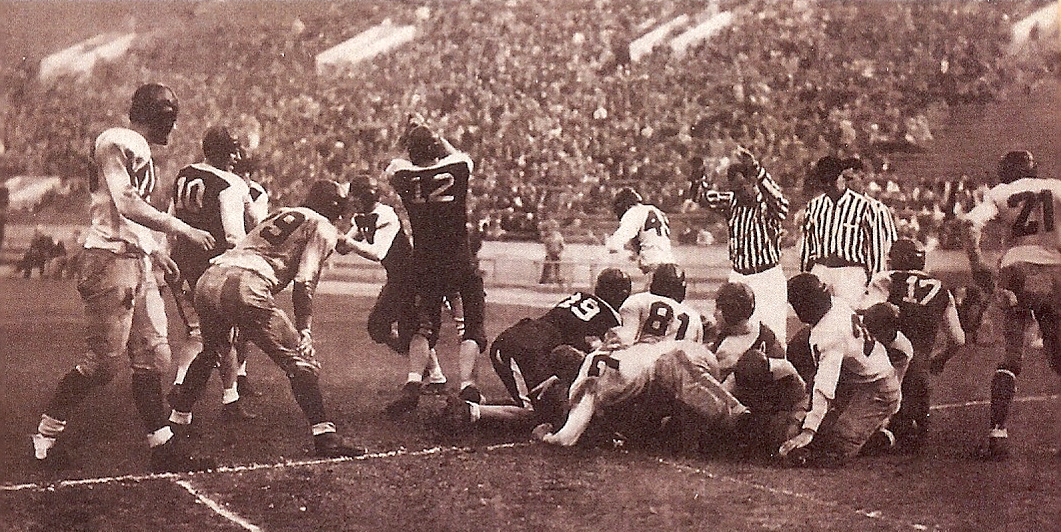
San Diego had an untidy advantage.
Troxel returned a punt 50 yards in the second quarter but San Diego was able keep the Sentinels at a distance for the remainder of the half. The Cavemen went to the dressing room with a tenuous, 6-0 lead.
Trouble arrived with the second half kickoff. Two disastrous penalties by the Hilltoppers helped position Inglewood in San Diego territory.
Schindler’s 32-yard kickoff return was nullified by a clipping penalty that set the Hilltoppers back to their 25. Another penalty for not coming to a complete set after a shift was for five yards. On fourth down Schindler’s punt went off the side of his foot and out of bounds on San Diego’s 41.
Inglewood labored 14 plays for the tying touchdown by Norm Padgett, and then Troxel scored the winning point after when he caught a lateral from quarterback Padgett and jogged in from the flank.
Inglewood had the edge in yardage and a 9-3 advantage in first downs. The Cavers, after averaging five yards for 54 rushing attempts the week before at Santa Barbara, were shut down.
Day, Schindler’s alternate at quarterback in the Cavers’ single wing formation, had 130 yards in 30 rushing attempts in the semifinals but was held in check by the smaller, quicker Inglewood forwards.
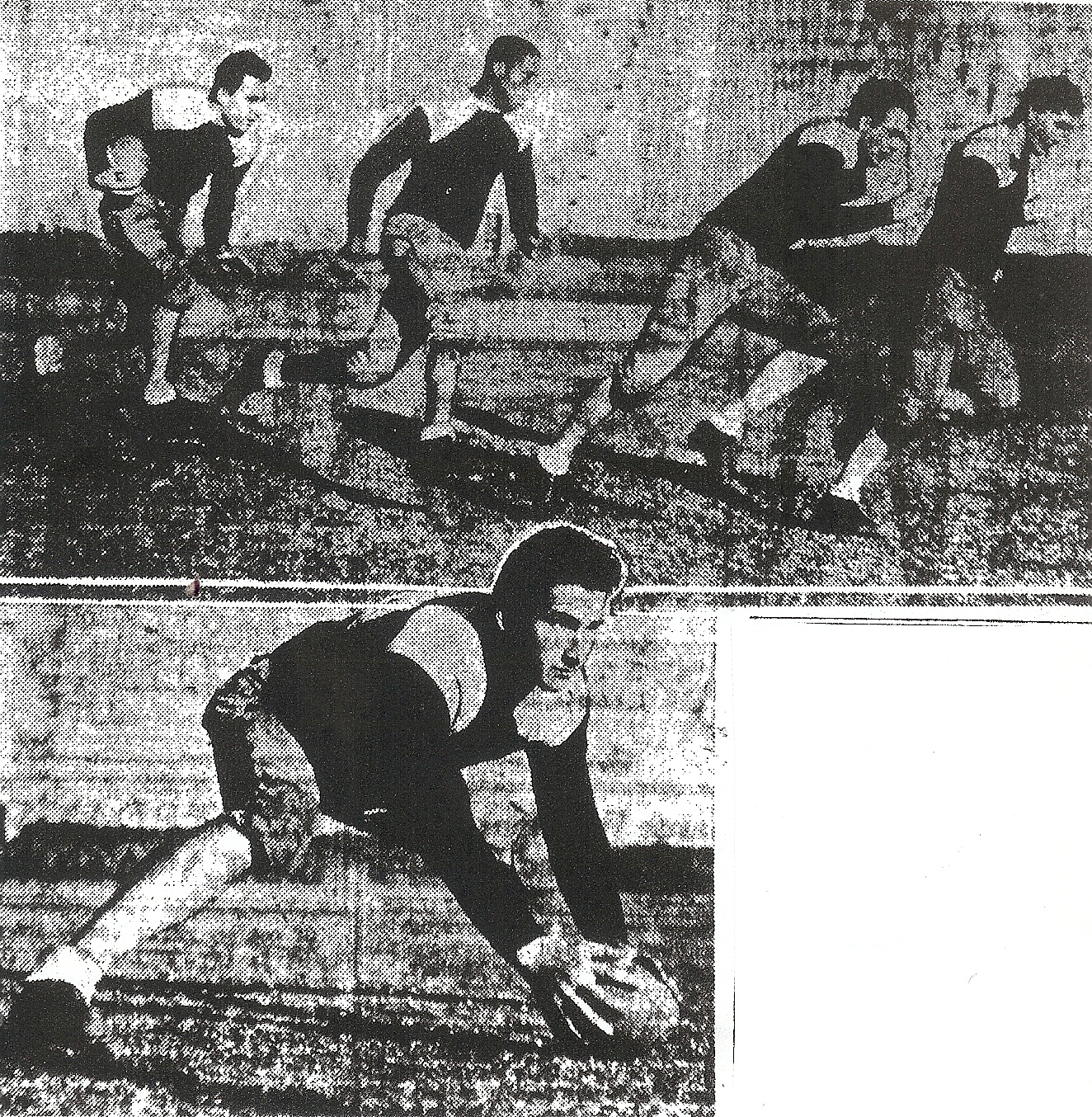
TAKE THE METRO
There were 15 high schools in San Diego County. San Diego was in the elite Coast League of big Southern California schools. Hoover was stepping out as an independent after three seasons in the City League.
What to do with the other 13?
The Metropolitan League was formed, with eight teams playing their first games in the circuit of city and suburban schools on Oct. 6, 1933.
As Charles Savage of The San Diego Union wrote: “The Metropolitan High School League, which was born with the New Deal last spring, will come before the gaze of the public this afternoon….”
The U.S. was reeling from the Great Depression. President Franklin Roosevelt, with approval from Congress in early 1933, instituted a series of economic programs known as the “New Deal.”
Byrne saw birth of the Metropolitan League as offering a “new deal” in San Diego County.
Affected were schools from the Southern Prep League and the disbanded City League.
La Jolla, Point Loma, Grossmont, Sweetwater, Army and Navy Academy, Oceanside, Coronado, and Escondido were members of the new alignment.
Officials from the Southern League’s Fallbrook, Mountain Empire, Julian, and Ramona met at the San Diego YMCA and scheduled competition in basketball, track and field, tennis, and baseball.
Mountain Empire, almost two hours away from San Diego in remote Campo, was the only Southern school fielding a football team. The Redskins adhered to a limited schedule against Imperial Valley teams or local junior varsity clubs. Fallbrook would send out its first varsity squad in 1936, Ramona in 1938, and Julian in 1967.
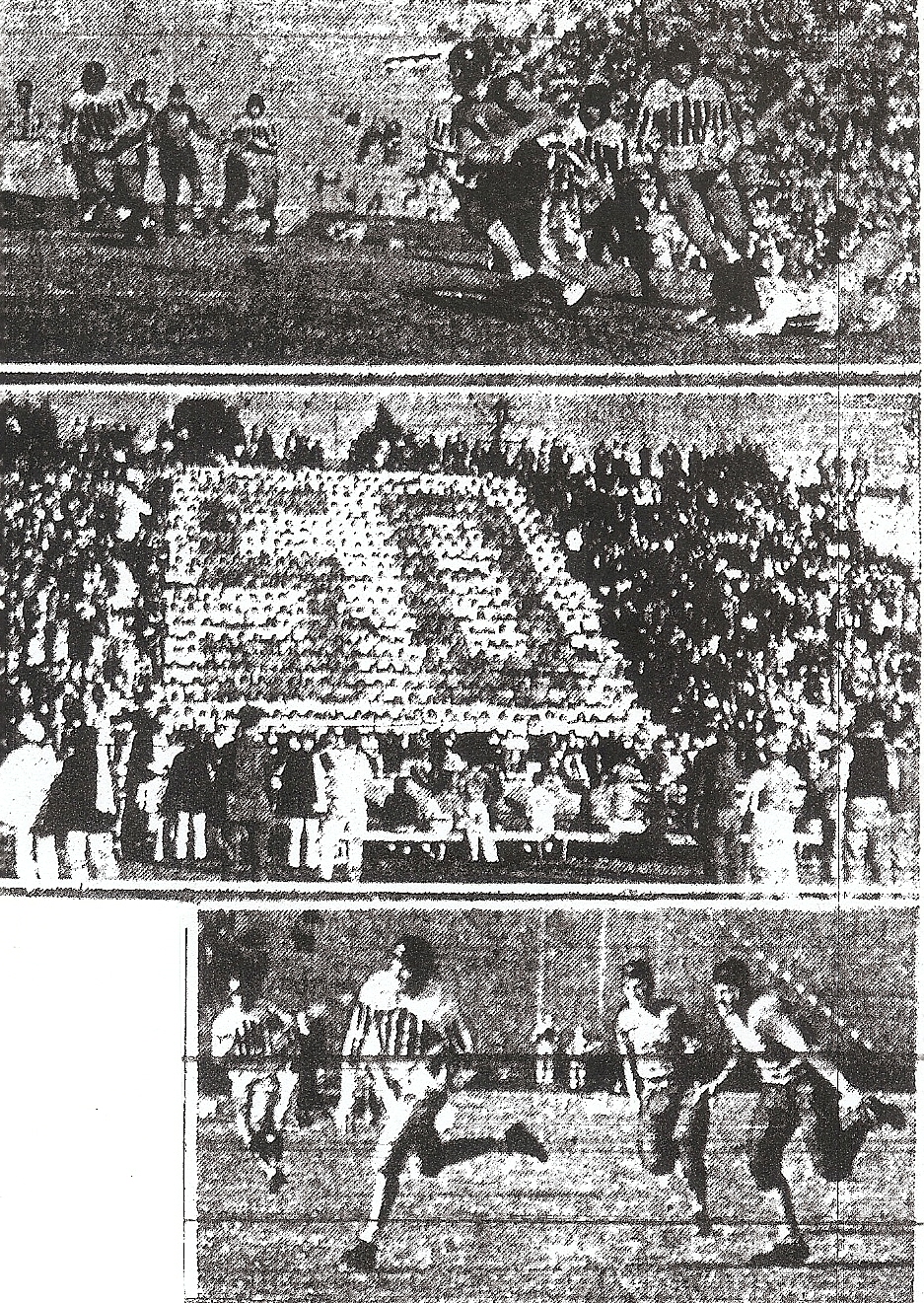
HERE COME HARES
Although Santa Ana and San Diego played for the 24th time since 1905 in one of the Southland’s oldest rivalries, the big game almost always was Long Beach Poly. The road to a championship went through the Jackrabbits, this season coping with the recovery of their campus, virtually destroyed by a massive earthquake that struck months before.
Orian Landreth’s team came South with a 5-0 record, better than San Diego’s 4-0-1, but the Hilltoppers prevailed 19-12 in a game of big plays in front of 8,000 at City stadium.
Schindler connected with Kenny Brown on a 52-yard touchdown pass play and ducked through his left tackle on a 48-yard spinner play to clinch the victory in the fourth quarter.
Grant Stone gave the Cavers a 13-0 lead at halftime when he scooped up a punt blocked by Coye Dunn and raced 48 yards. It was Stone’s third touchdown with a recovered blocked punt. Kenny Woodruff put Poly on the scoreboard with an 80-yard punt return.
CIF FACES POVERTY HEAD ON
California Interscholastic Federation, governing body of high school athletics in Southern California, was forced to charge dues to all its members. The CIF had a minus treasury for the first time when the 1933-34 school year began.
The CIF Southern Section had been self supporting since it began operation in 1914, drawing revenue through a percentage of proceeds of championships played in all sports. Promotion of the 1933 Southern California and state track meets and effects of the Great Depression necessitated the move, according to commissioner Seth Van Patten.
The assessment schedule was based on student enrollment:
100 or less, $2.50.
100 to 500, $5.
500 to 1,000, $10.
1,000 to 2,000, $15.
2,000 or more, $20.
A revenue stream of $1,250 was calculated. That would make up the deficit and provide operating expenses until the championship football games, said Van Patten.
WHAT’S YOUR NAME AGAIN?
A bonus for the CIF was an additional $25 playoffs revenue from San Diego High, which forfeited its 1933 baseball season following the second game of the playoffs when it was discovered that two Hilltoppers had played in a meaningless game in the Imperial Valley the previous summer.
Chet and Henry (Swede) Smith admitted they used aliases when they appeared in the contest. The Cavers, heavily favored to beat Santa Maria in the Southern California finals, had their 19-3 record erased and were bounced from the playoff finals.
CARDINALS COME OF AGE
Hoover stepped up in class in its fourth varsity season, opting to go independent and playing San Diego for the first time.
Chester Webber of the Elks Club provided a trophy and 12,000 turned out in City Stadium.
Coach John Perry’s Redbirds marched 64 yards to the 20-yard line, stopped by the halftime gun. It was Hoover’s only threat as San Diego won 33-0.
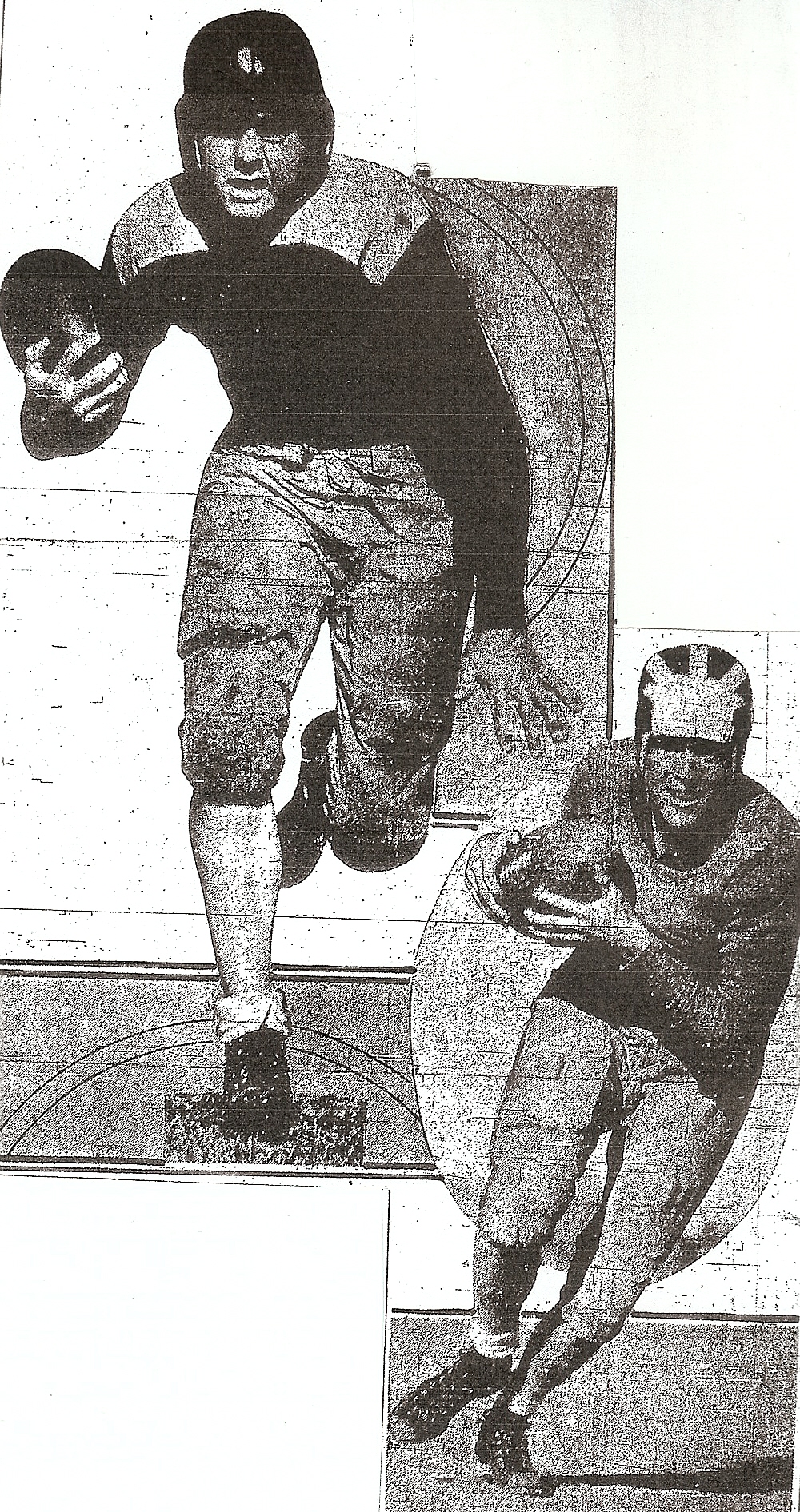
FOOTBALL IS KING
San Diego High, enrollment almost 2,900 in three grades, was one of the largest schools in the state and Hobbs Adams did not want for football candidates. More than 100 turned out in September.
Adams scheduled Sweetwater and Calexico on the same day in the season’s first week. His plan was for the Cavers’ varsity and fourth units to play one of the opponents and his second and third units to play the other.
The varsity played Sweetwater and the newly-formed sophomore squad played Calexico. Escondido originally was to be San Diego’s opening opponent, but Cougars coach Harry Wexler pulled his squad and took on Hemet at home.
GONE FISHIN’
A popular summer occupation for decades for San Diego area athletes was work in the local tuna fleet. Cavers letterman halfback Bob Chase didn’t return from an extended trip until the third game of the season. Meals aboard ship agreed with Chase, who came back 15 pounds heavier at 167.
Chase was one of nine lettermen returning from the 1932 team that was 7-2. Only two regulars were guard Jim Riveroll and end Alex (Pudge) Gentles.
CIF, GET LOST!
The CIF informed John Perry the Cardinals would qualify for the playoffs by winning five of their eight games. Hoover still was invited with a 3-2-3 record but declined because the CIF wanted the Cardinals in the minor division.
Hoover’s opponent would have been Grossmont, which also was not interested. Hoover wanted to go big school. Grossmont, 9-0 and the first Metropolitan League champion, perhaps did not want to risk a loss and put a blight on its undefeated season.
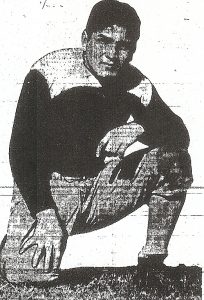
4 ALL-SOUTHERN TEAMS
Ambrose Schindler was on the all-Southern California first team, guard Jim Riveroll on the second team, end Alex (Pudge) Gentles on the third team, and center Bill Simons on the fourth team.
Tackle Dave Devarona of Point Loma also was on the fourth team, along with halfback John Scott of Coronado.
Ollie Day, the County’s leading scorer with 90 points who alternated with Schindler, made a terrific, late-season run (8 touchdowns in 3 games) but after votes were cast.
Player of the year was Los Angeles Jefferson end Woody Strode, who went on to act in 70 motion pictures and was one of the first African-American players to sign with the NFL Los Angeles Rams in 1946.
SIGNS OF THE TIMES
San Diego police chief Harry Raymond was summarily canned by City Manager Fred Lockwood. Donning his “fighting clothes”, Lockwood charged that “Raymond’s not the man for the job. He has shown no executive ability.”
The Chief got the word when he returned from lunch to find a successor in his office.
AZTECS GET GYMNASIUM
Completion was nearing for a 50,000 square-foot, $200,000 edifice that would host athletic offices and serve as the San Diego State Aztecs’ basketball gym. For years the building housed the 1,800-seat home court for the Aztecs.
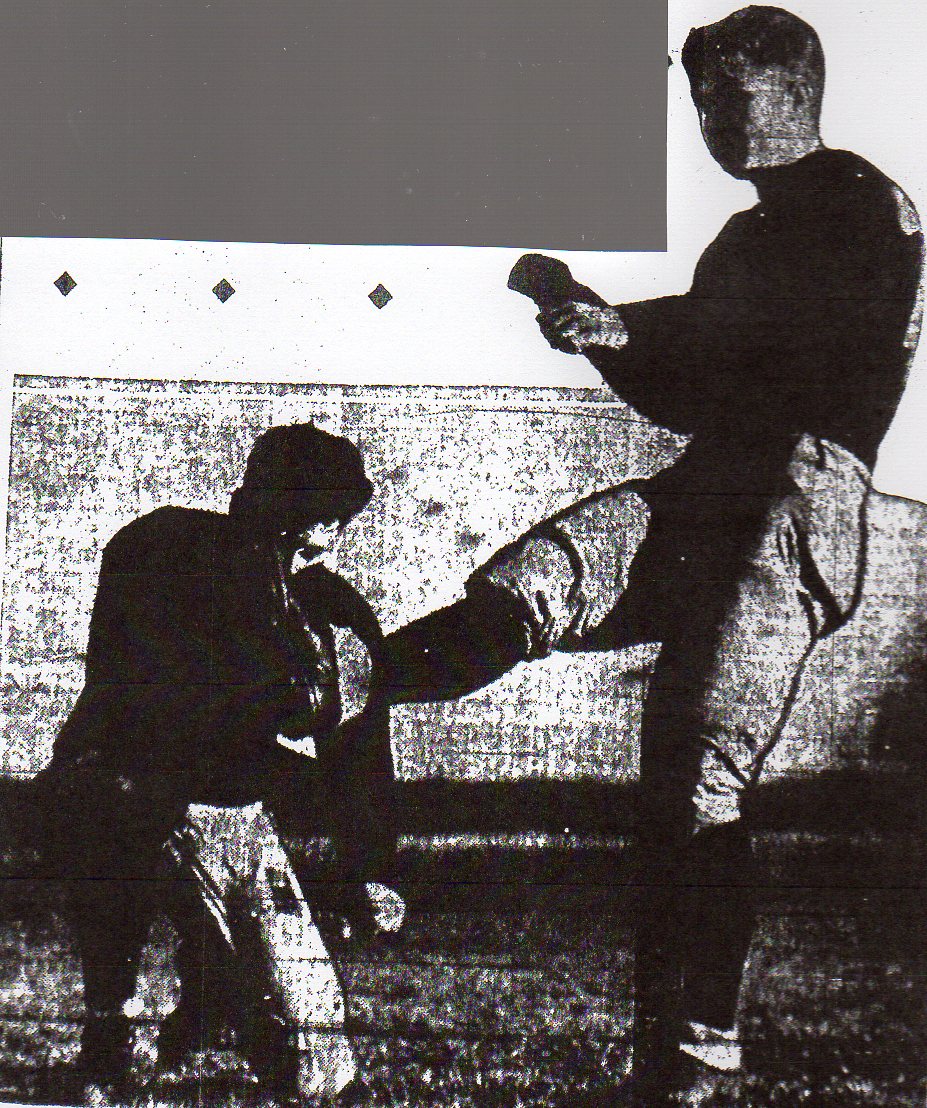
BURGLARS LIKE FOXES
For the third time in three years a Fox Theater venue in San Diego was robbed. Bad guys struck at Seventh Avenue and B Street. The Fox North Park at 29th and University, and the Fox Balboa at 4th and E also had been hit.
BARBERS TRIMMED
San Diego city council was asked to get involved in a dustup over the cost of a haircut. An arbitrary price of 65 cents scheduled under the barbers’ section of the California Recovery Act spurred outrage.
The barbers finally agreed to 50 cents for haircuts, .25 for shaves, .40 for women’s neck trims, and .35 for children’s cuts.
WHAT’S IN A NAME?
This never caught on in San Diego: Players for Jefferson High in San Antonio did not have jersey numerals but letters. When all linemen were in the game the letters spelled Mustang, the team nickname.
TEACHER AND PUPIL
John Perry’s Hoover Cardinals battled to a 6-6 tie with Long Beach Wilson, led by first-year head coach Rockwell (Rocky) Kemp, former USC athlete who played for Perry at San Diego High from 1922-24.
ARMY-NAVY SPANS THE GLOBE
The boarding school in Pacific Beach put an 0-8 team on the field and they came from faraway locales, such as Ketchikan, Alaska; Tijuana, Mexico, and Minneapolis, Minnesota.
Monograms were awarded to 15 players and the team manager at the semi-annual lettermen’s dance. Not explained but endorsed by Cadet brass was the accepted invitation of Grossmont’s championship team, coach, and principal, who were honored guests.
MAGIC STEEL CARPET
Railroad travel has been described as the “civilized way” of getting to a destination and was a mode San Diego High used.
The Cavers boarded a northbound train at Santa Fe Depot at 2:15 p.m., switched to Southern Pacific in Los Angeles, and arrived in Santa Barbara around 9 p.m. They also rode the Santa Fe to Los Angeles the day before the CIF finals.
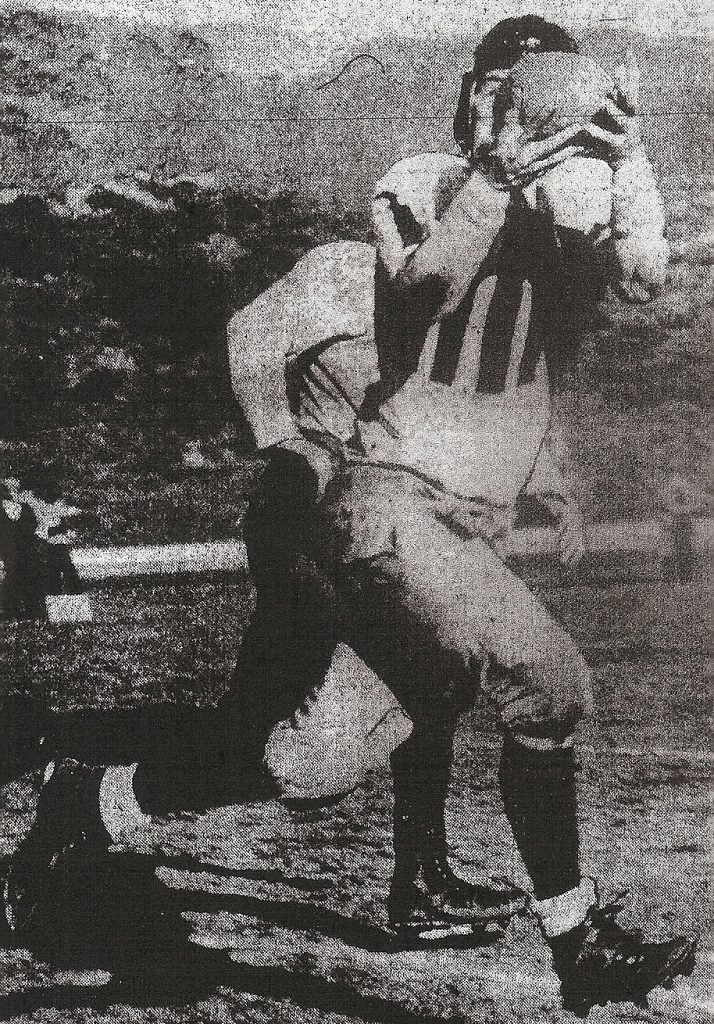
TRUE GRID
Phoenix Union came here a day before its game with San Diego and stayed at the upscale U.S. Grant Hotel… San Diego overnighted in Whittier before pushing on to Alhambra for a Saturday afternoon game… Francis Leary, letterman guard in 1930, re-enrolled at Hoover after dropping out of school for a year… Hoover used a huddle instead of calling plays at the line of scrimmage during a game with San Diego State Frosh… three ex-Cardinals knew Hoover’s signals… Oceanside drove 99 yards in the last two minutes to beat Point Loma on a eight-yard pass with 10 seconds remaining, 13-12…the Pirates then came out in blue jerseys and “flaming” red pants when they met Sweetwater… the Pirates’ colors may have changed; they are green, white, and black today… Hoover was stopped three times inside Yuma’s five-yard line in an 0-0 tie, highlighted by the first game under lights in Yuma history, courtesy of the local Merchants’ Association…an Escondido player hid near the sideline, then caught a pass and scored in a 6-6 game with Coronado…Covina lost track of downs and did not punt from its seven-yard line…St. Augustine used the blunder to score in a 6-6 tie…Long Beach Poly and Santa Barbara accused the Cavers of fibbing, claiming they were much bigger than listed weights…Hobbs Adams, shrugging off the accusations as “psychology”, said he weighed all his players and they averaged out at 167, a healthy size for that era…The San Diego Union invited all area coaches and spouses to view “College Coach,” a movie in which the entire USC squad appeared…Pat O’Brien played a ruthless coach, Dick Powell and Ann Dvorak co-starring… the film was viewed at the Plaza Theater, a block from Union offices…Hal Higgins, years later co-owner of Higgins and Crosthwaite’s successful sporting goods emporium at 10th Avenue and B Street, was a standout for La Jolla….

Enjoyed that game. My book will be ready to be published. It is called, Schindler and Trojan Gladiator. For your information, after the Inglewood second game, Schindler cried for the second time in his life. The first came during the beginning of the depression. He is still kicking, so I am told.
I spoke with Schindler about a year and a half ago. He was living with a caretaker in Redondo Beach. Sounded very good. Must now be 95 or 96. I remember seeing him officiate American Football League games in Balboa Stadium in early’sixties.